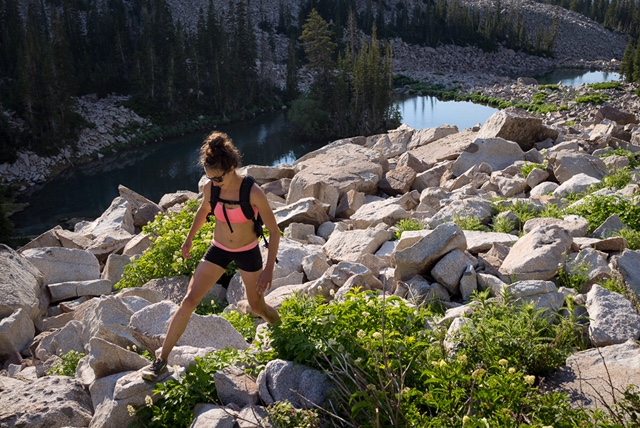
Six Reasons I Recommend the Altra King MT
June 12, 2018
How To Manage Your Bunions Without Surgery
June 27, 2018STARTUP GUIDE TO TRAIL RUNNING
I hope that you landed on this page because you have been inspired to become a trail runner! Before we get too excited, there are a few things that must be in check before venturing off on your first trail run. Below is a basic guide to starting out. You’ll probably outgrow this guide after your first couple months on the trails. Nevertheless, get off to a good start, and make this a lifetime passion of yours!
FIND THE RIGHT SHOE
Go to a local running store and try on several trail running shoes until you find a pair that feels comfortable. Most stores have a wall dedicated to trail running shoes. I am partial to Altra, because they feel the best on my feet. However, they are a zero drop shoe, meaning that if you have tight calfs and a shortened Achilles tendon, they can take a while to adjust to. Also, beware that you can end up with Achilles or plantar fascia pain if you transition to a zero drop shoe too quickly.
Look for a trail shoe with a rock plate, which will protect the soles of your feet from sharp rocks. Most trail running shoes these days have rock plates.
If you have medical grade or custom orthotics make sure you bring them with you. If they don’t fit into any of the shoes you try, don’t let that me the determining factor for not picking out the shoe that feels best. There are several over-the-counter orthotics that fit well in running shoes. Additionally, consider a custom orthotic specific for running.
WHERE TO START
If you are living in Salt Lake City, I would recommend that you initially run the Pipeline Trail. Start at the Burch Hollow trail head, which is located a few miles up Millcreek Canyon. This trail is flat, with hardly any technical terrain. It is also at moderate elevation, and has great views! Run this as an out-and-back.
If you decide to start on a different, likely more convenient trail, don’t be hesitant to walk any steep uphill sections, or technical areas.
Keep your first trail run around 30 minutes (or roughly 2.5-3 miles), and at a conversational pace. Your trail pace will always be slower than your road pace. There are times when I’m running 9-10 min/mile pace on an uphill trail, and I feel like I’m going hard. Whereas, 6 min/mile pace might feel easy on a flat road. You will find that you will be able to progress quite quickly as your fitness improves.
ADDITIONAL GEAR
All you need right now is a good pair of shoes, shorts, sport’s bra, and a t-shirt (optional on a hot summer day). Skip the hydration packs and other gimmicky items. A lot of trail runners just like to “look the part”, but in reality, they look ridiculous running with all their pricy survival gear on these local trails! Once you start progressing to 90 min runs, I’ll suggest carrying a water bottle. If you start running for 2+ hours, then might want to look into some of the “survival gear”.
Trail Runner Magazine might be a good resource to help you get acquainted to trail running. I find the info a bit generic, but I have only bought the Magazine a couple times. Nonetheless, the magazine is great for gear review, and also has a large section in the back for upcoming races.
FUELING YOU RUN
Don’t bring snacks on your run unless you are going for 90+ min. Even then, an energy drink might be your best option. We can discuss some of the benefits of fat adaptation later. But for now, I would suggest that you eat an easily digestible meal 2+ hours prior to your run. Over time, you will figure out what sits well and what doesn’t. I’m still figuring this out myself…
WARMING UP FOR YOUR RUN
Just start at an easy pace. You should feel like you are “shuffling” for the first 5-6 minutes. Some runners have a warm-up routine. Often times, this is for those who are rehabbing an injury. If you have a warm-up routine that you are currently using for some other injury (i.e knee, hip) make sure you incorporate that into your warm up. Otherwise, just start slow, and find your flow.
ADDITIONAL TRAINING
Augment your training with hikes! The steeper the better. Steep hikes are “leg day” in disguise. Think hundreds of box steps ups over a few beautiful miles of trail! Most hikes in the Wasatch can be fun and challenging. Use these hikes as a way to build endurance. Expect to be sore the next day. Watch your footing. Bring water and snacks!



